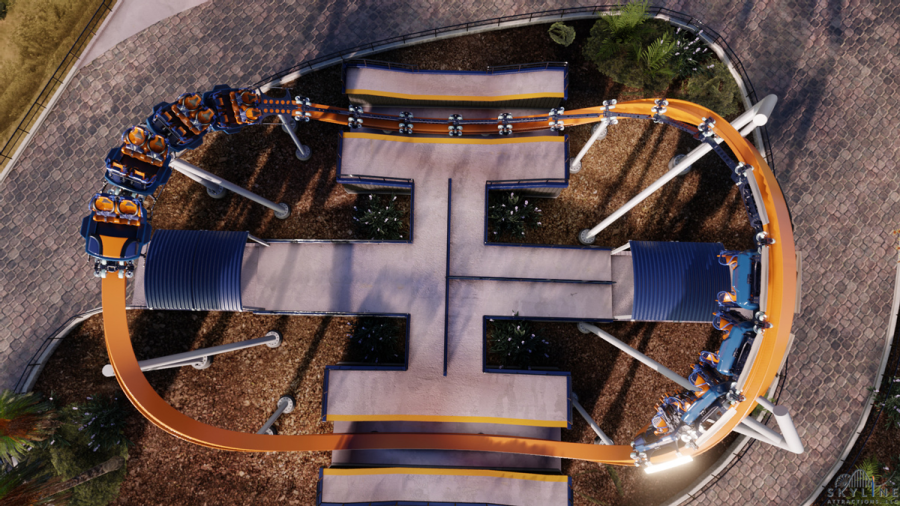Coping with Supply Chain Challenges

On a good day, Chris Gray, partner and vice president of Skyline Attractions, is able to outsmart a supply problem by turning back time.
Tapping into a bevy of resources and a deep network of manufacturing connections, the Orlando-based ride manufacturer is sometimes capable of nabbing a critical ride replacement part by calling companies on the West Coast and making the most of the time difference.
“Know your West Coast branch contacts if your [East Coast contact] is already closed for the day,” says Gray. “That extra cost in shipping sometimes is worth every penny and then some.”
Skyline Attractions, like other suppliers in the attractions industry, has established supply chains for everything. Gray’s includes everything from machine shops and hardware suppliers to partners who handle painting and coating. The end goal of any supply chain is to obtain the goods needed to keep a company’s inventory stocked and customers happy.
Adding a global pandemic to the mix, however, has left many industries finding new ways to keep inventory current, fulfill orders, and remain operational.
Anticipated Delays and Global Disruptions
Anything from inclement weather and testing procedures to customs and production time can delay orders, says Bryn Netz, regional sales manager for Sureshot Redemption. The California-based division of The Foland Group specializes in stocking prize redemption counters at family entertainment centers (FECs) like Chuck E. Cheese and Dave & Buster’s.
Beyond the usual cause for delays, the ongoing COVID-19 pandemic has resulted in new challenges to navigate.
“Getting customers to catch up on their outstanding invoices is paramount in our recovery,” says Netz. “We can’t buy more product until our customers pay for the product they have already received and used.”
Netz notes that FECs in California seem to be among the hardest hit in the last year. Under the state’s guidelines, they have only just been allowed to reopen their outdoor attractions, which eliminates the operations of indoor activities, like arcade games and redemption centers. As a result, sales have slowed down and are generally sporadic for Sureshot.
For the team at Player One Amusement Group, the slowdown of sales at the start of the pandemic synched up to a near-halt in production within the company’s supply chain.
“It’s all across the board as the supply chain has been totally disrupted in almost every industry,” says Jon Brady, Player One’s vice president of business development. “The reality though was we just didn’t have much demand, so it was a bit of a moot point.”
Brady says Player One Amusement Group—which offers a wide variety of services including rentals, home services, repairs, and a roster of general amusement equipment for purchase—works with more than 50 different equipment manufacturers based around the world. Each is a bit different, requiring the company to inventory “quite a bit of equipment” and continuously order from its suppliers.
Lisa Anderson, a consultant for supply chain operations worldwide with LMA Consulting Group, says at the start of the pandemic every industry felt the crunch.
“Initially, when the pandemic hit ... either your demand dropped off substantially or your demand increased substantially,” says Anderson. “It’s been extremely volatile.”
She says no matter how prepared a company was, there was no way to ever predict a global disruption of this magnitude, and even small disruptions amount to big frustrations.
“A small ripple on either side—and this was no small ripple—a small ripple on either side causes changes throughout, and that’s what’s happening,” she says. “It’s swinging in both directions.”
Moving Forward
Anderson says companies that have fared the best in terms of the supply chain are those that can adapt to changing customer needs and those businesses that track demand and can anticipate it.
Slips in the supply chain can result in major headaches, says Gray with Skyline, and having a park need to close one of its rides, while it waits for a part, is even worse.
Keeping a bank of spare parts easily accessible, especially those that are the most in demand like wheels for roller coasters, is an easy way to reduce pressure.
“In our game, it’s always expect the unexpected, and be ready to pivot and move fast,” he says.
Sureshot Redemption routinely keeps a three-month supply of any one item stocked, Netz says, but it closely monitors existing inventory to ensure it has a “just-in-time” replenishment system.
“My sales staff work very closely with my purchasing team to identify fast-moving items,” says Netz, adding that most of the factories Sureshot works with are in China.
Brady says planning ahead is critical for his team.
“We have a really good pulse on the industry, our customer base, trends, timings, and we know what games are hot and which ones are not,” he says. “So that is helpful.”
Anderson anticipates the global supply chain to begin correcting this summer and better aligned in 2022. Getting there will require everyone to work together, she says.
“In order to be successful, you’re going to have to work with your supply chain partners and get back in alignment to get back in better shape,” says Anderson.
